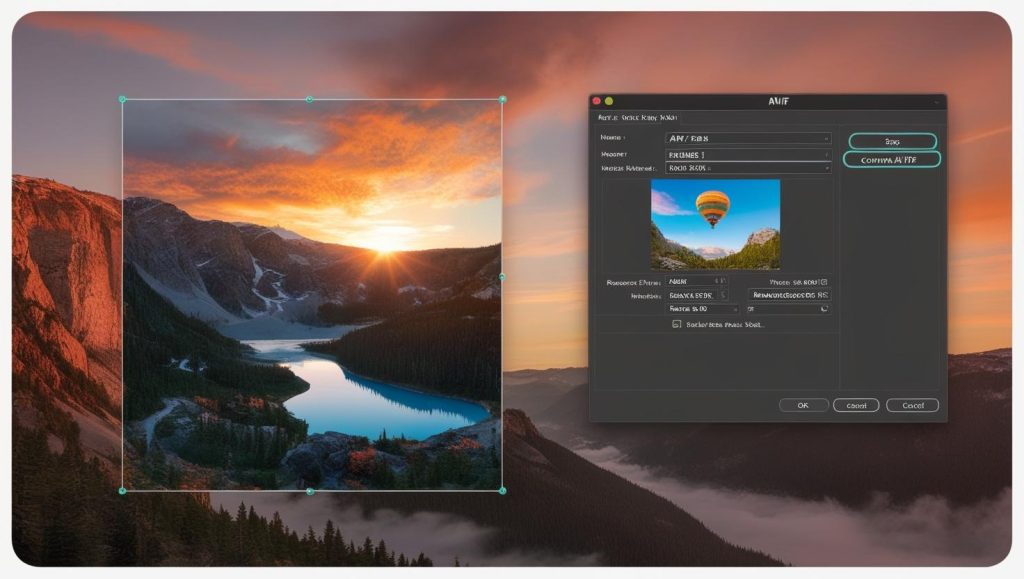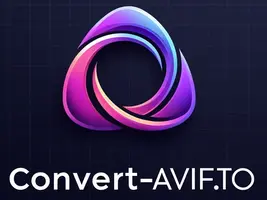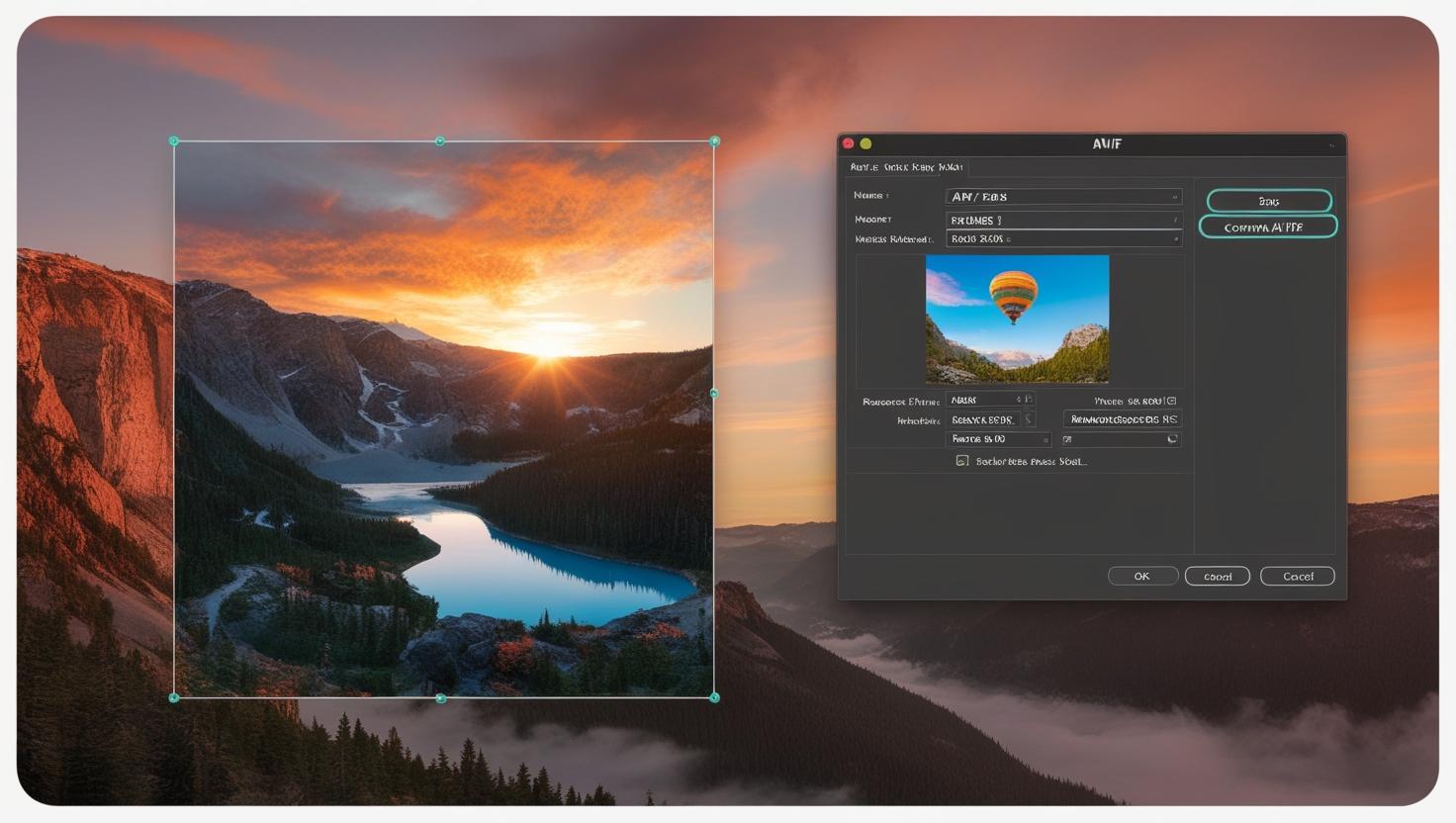The digital world constantly evolves with new image formats that promise better compression, higher quality, or enhanced features. Among these innovations, AVIF (AV1 Image File Format) has emerged as a powerful contender in the image format landscape. However, despite its technical advantages, there are many situations where converting AVIF to JPG becomes necessary for compatibility and practical usage. This comprehensive guide explores everything you need to know about this important conversion process.

Understanding Why You Need to Convert AVIF to JPG
AVIF represents the cutting edge of image compression technology. Developed by the Alliance for Open Media, this format leverages the AV1 video codec to deliver exceptional compression efficiency while maintaining impressive visual quality. AVIF files are typically 50% smaller than equivalent JPEG files at similar quality levels—a significant advantage in today’s bandwidth-conscious digital environment.
Despite these compelling benefits, several scenarios make converting AVIF to JPG essential:
Compatibility Concerns
While AVIF support is growing, JPG enjoys near-universal compatibility across:
- Legacy software and applications
- Older operating systems
- Most consumer devices
- Print services and professional printing equipment
- Email clients and messaging applications
When you need to ensure your images can be viewed by anyone, regardless of their technical environment, converting AVIF to JPG provides peace of mind.
Software Requirements
Many specialized applications still lack AVIF support, including:
- Certain professional editing software
- Document management systems
- Content management platforms
- Legacy graphics applications
- Some mobile applications
Converting to JPG ensures your images work seamlessly with these established tools.
Performance Considerations
Although AVIF offers superior compression, it comes with tradeoffs:
- More computationally intensive to decode
- Potentially slower loading on older devices
- Higher memory requirements during processing
JPG’s established encoding/decoding processes are highly optimized across virtually all computing platforms.
For reliable conversion between these formats, many professionals use a dedicated convert AVIF to JPG tool that maintains optimal quality during the transformation process.
Technical Comparison: AVIF vs. JPG
Understanding the technical differences between these formats helps explain what happens during conversion:
AVIF Format Characteristics
AVIF represents modern image compression with several advanced features:
- Bit Depth: Supports 8, 10, and 12-bit color precision
- Color Space: Full support for wide gamut color spaces
- Transparency: Includes alpha channel capabilities
- Compression: Uses advanced techniques from video coding:
- Intra-frame prediction
- Adaptive quantization
- Global and local motion compensation
- HDR Support: Native high dynamic range capabilities
- Animation: Can contain multiple frames (similar to GIF)
- Metadata: Comprehensive metadata support
JPG Format Characteristics
As the established standard, JPG offers reliability with some limitations:
- Bit Depth: Typically limited to 8-bit color precision
- Color Space: Originally designed for standard RGB and CMYK
- Transparency: No alpha channel support
- Compression: Uses discrete cosine transform (DCT) based compression
- HDR Support: Limited through extensions
- Animation: No native animation support
- Metadata: Supports EXIF, IPTC, and XMP standards
During conversion, features exclusive to AVIF (like transparency or animation) will be lost or modified to conform to JPG’s capabilities.
Methods to Convert AVIF to JPG
Multiple approaches exist for converting AVIF images to JPG format, each with distinct advantages depending on your specific needs.
Desktop Software Solutions
Desktop applications provide powerful control over the conversion process:
Graphics Editing Software
Professional image editing applications increasingly support AVIF import:
- Adobe Photoshop: Requires appropriate plugins or updates
- GIMP: Open-source alternative with extension support
- Affinity Photo: Professional editing with AVIF compatibility
The conversion workflow typically involves:
- Opening the AVIF file in the application
- Making any desired adjustments or edits
- Saving or exporting as JPG with quality settings
These applications offer maximum control over conversion parameters but may require technical knowledge.
Specialized Conversion Utilities
Purpose-built conversion tools simplify the process:
- XnConvert: Multi-platform converter with batch capabilities
- IrfanView: Lightweight viewer with conversion functions
- FastStone Image Viewer: User-friendly interface with conversion options
These utilities typically focus on batch processing and straightforward interfaces, making them ideal for converting multiple images quickly.
Online Conversion Services
Web-based solutions offer accessibility without software installation:
Browser-Based Converters
Online conversion services provide convenient access:
- Upload AVIF files through web interfaces
- Select conversion parameters
- Download resulting JPG files
These services are particularly useful for occasional conversion needs or when working on devices where software installation isn’t practical.
Progressive Web Applications
Some modern conversion tools work as progressive web applications:
- Function partially offline after initial loading
- Process files locally for better privacy
- Provide app-like experiences in browser environments
These hybrid solutions combine web accessibility with improved performance.
Command Line and Programmatic Approaches
For technical users and developers, command-line tools offer powerful automation capabilities:
Command Line Utilities
Text-based tools provide scriptable conversion:
- ImageMagick:
convert input.avif output.jpg - FFmpeg:
ffmpeg -i input.avif output.jpg - libavif tools: Specialized AVIF processing utilities
These approaches excel in server environments, batch processing scenarios, and workflow automation.
Programming Libraries
Various programming languages offer libraries for format conversion:
- Python: Pillow and OpenCV libraries
- JavaScript: Sharp and AVIF.js
- C/C++: libavif and libjpeg
Developers can integrate these libraries into custom applications and workflows.
Quality Considerations When Converting AVIF to JPG
Converting between image formats inevitably involves quality considerations. Here’s how to optimize the conversion process:
Understanding JPG Quality Settings
JPG uses a quality scale (typically 0-100) that balances file size against visual quality:
- High Quality (90-100): Minimal compression artifacts, larger files
- Medium Quality (70-85): Good balance for most photographic content
- Low Quality (below 70): Noticeable artifacts but smaller files
The ideal setting depends on your specific requirements for quality versus file size.
Preserving Important Image Characteristics
Several factors affect the perceived quality of converted images:
Resolution Management
Maintain appropriate resolution during conversion:
- Preserve original dimensions when quality is paramount
- Consider the intended use case when resizing
- Use high-quality resampling algorithms if resizing is necessary
Color Accuracy
Color handling affects visual fidelity:
- Consider color profile embedding in JPG output
- Be aware of potential gamut limitations when converting from wide-gamut AVIF images
- Test critical colors after conversion for important content
Detail Preservation
Different conversion methods handle detail differently:
- Evaluate multiple conversion tools for detail-critical images
- Pay special attention to areas with fine textures or sharp edges
- Consider using higher JPG quality settings for detail-rich images
Handling AVIF-Specific Features
Some AVIF capabilities require special handling during conversion:
Transparency Conversion
Since JPG doesn’t support transparency:
- Choose appropriate background colors to replace transparent areas
- Consider context when selecting background colors
- Test results in typical viewing environments
HDR Content Conversion
When converting HDR AVIF images:
- Expect tone mapping to standard dynamic range
- Consider specialized HDR-aware conversion tools for important content
- Evaluate results across different displays
Batch Processing for Multiple AVIF to JPG Conversions
Organizations and photographers often need to convert multiple images simultaneously:
Efficient Batch Conversion Strategies
Processing multiple files efficiently requires planning:
- Test conversion settings on representative samples first
- Use multi-threaded tools when available for faster processing
- Consider overnight batch processing for large collections
Maintaining Consistency Across Images
Ensuring uniform results across multiple images:
- Apply consistent quality settings
- Standardize output parameters like color profiles and resolution
- Implement naming conventions for converted files
Automating the Workflow
For regular conversion needs:
- Create scripts or batch files for command-line tools
- Explore workflow automation software
- Consider folder monitoring solutions that auto-convert new files
Troubleshooting Common Conversion Issues
Even with the right tools, challenges can arise during conversion:
Image Quality Problems
When converted JPGs show unexpected quality issues:
- Try different conversion software or services
- Adjust quality settings upward
- Check if intermediate conversion steps might help (e.g., AVIF → PNG → JPG)
- Verify source AVIF quality before conversion
Color Shifts
If colors appear different after conversion:
- Check color profile handling in your conversion tools
- Verify monitor calibration when evaluating results
- Consider using tools with explicit color management options
Metadata Preservation
When image metadata matters:
- Verify if your conversion tool preserves metadata
- Consider tools with explicit metadata preservation options
- Manually transfer critical metadata if necessary
Advanced Considerations for Professional Use
Professional environments may require additional considerations:
Integration with Content Management Systems
When working with larger content ecosystems:
- Consider server-side conversion capabilities
- Explore API-based conversion services for CMS integration
- Develop custom workflows for specific publication pipelines
Quality Assurance Processes
Establishing reliable conversion quality:
- Implement sampling and verification procedures
- Create reference images for quality comparison
- Consider automated quality metric calculations (PSNR, SSIM)
Archival Considerations
For long-term storage planning:
- Consider keeping original AVIF files alongside converted JPGs
- Document conversion parameters for future reference
- Implement validation procedures to ensure accurate conversion
Future Trends in Image Format Conversion
The landscape continues to evolve with several emerging trends:
Increased Native AVIF Support
As AVIF adoption grows:
- Major operating systems are adding native support
- Web browsers increasingly render AVIF natively
- Creative applications are integrating AVIF capabilities
These developments may eventually reduce conversion needs, though JPG compatibility will remain important for years to come.
AI-Enhanced Conversion Technologies
Artificial intelligence is transforming image processing:
- Neural network-based upscaling preserves details during conversion
- Machine learning algorithms reduce compression artifacts
- AI-based systems optimize conversion parameters automatically
These technologies promise better quality preservation during format transformation.
Format-Agnostic Workflows
Modern content systems are evolving toward format flexibility:
- Content delivery networks serve optimal formats based on client capability
- Design applications work with multiple formats simultaneously
- Storage systems maintain format flexibility while presenting unified interfaces
This evolution may change how we think about format conversion in the future.
Conclusion: Mastering AVIF to JPG Conversion for Your Needs
Converting AVIF to JPG represents an important bridge between cutting-edge technology and universal compatibility. By understanding the available tools, quality considerations, and workflow optimizations, you can effectively transform your images while maintaining appropriate visual quality.
Whether you’re a photographer sharing images with clients, a web developer ensuring cross-browser compatibility, or an organization managing a large image library, mastering the nuances of AVIF to JPG conversion helps ensure your visual content remains accessible and effective across all platforms and devices.
As image format technology continues to evolve, maintaining flexible conversion capabilities remains an essential skill for anyone working with digital images in professional or personal contexts.

